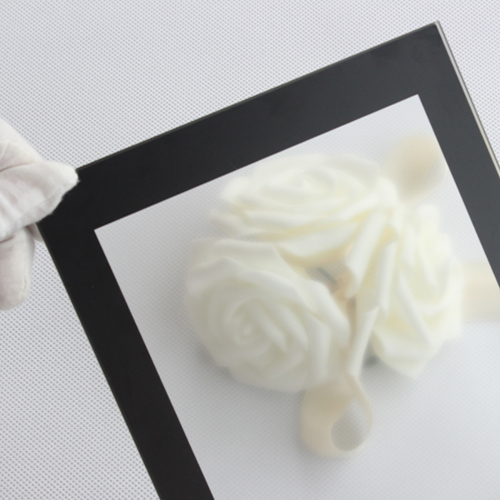Tips of Etched Anti-Glare Glass
Q1: How can I recognize the anti-glare surface of AG glass?
A1: Take the AG glass under daylight and look at the lamp reflected on the glass from the front. If the light source is dispersed, it is the AG face, and if the light source is clearly visible, it is the non-AG surface. This is the most direct way to tell from visual effects.
Q2: Does etching AG affect glass strength?
A2: The strength of the glass is almost non-negligible. Since the etched glass surface is only about 0.05mm, and the chemical reinforcement is soaked, we have done a number of sets of tests; the data show that the strength of the glass will not be affected.
Q3: Is the etching AG made on a glass tin side or an air side?
A3: Single-sided etching AG glass usually performs the etching on air side. Note: If customer requires etched tin side can also be carried out.
Q4: What is the AG glass span?
A4: The AG glass span is the diameter size of the surface particles after the glass is etched.
The more uniform the particles, the smaller the particle span, the more detailed the effect picture displayed, the clearer the image. Under the particle image processing instrument, we observed the size of the particles, such as spherical, cube-shaped, non-spherical, and irregular body-shaped, etc.
Q5: Is there a glossy GLOSS 35 AG glass, where is it generally used?
A5: The GLOSS specifications have 35, 50, 70, 95, and 110. Generally the haze is very low for Gloss 35 which is suitable for mouse board function whlie for display usage; the gloss should be more than 50.
Q6: Can the surface of AG glass be printed? Is there any effect on it?
A6: The surface of AG glass can be silkscreen printed. Whether it is a one-sided AG or a two-sided AG, The printing process is same as the clear tempered glass without any impact.
Q7: Will the gloss change after AG glass is bonded?
A7: If the assembly is OCA bonding, the gloss will have changes. The AG effect will change to one-sided after OCA bonded for double sided AG glass with 10-20% increasing for the gloss. That is, before bonding, the Gloss is 70, after bonded; the Glass is 90 or so. If the glass is one-sided AG glass or frame bonding, the gloss will have no much change.
Q8: Which effect is better for anti-glare glass and anti-glare film?
A8: The biggest differences between them are: the glass material have higher hardness on surface, good scratch-resistance, resistant to wind and sun and never fall off. While PET film material is easily to fall off after a time of period, also not resistant to scraping.
Q9: What hardness can the etched AG glass be?
A9: The hardness does no change with etching AG effect with Moh’s hardness 5.5 without tempered.
Q10: What thickness can AG glass be?
A10: There are 0.7mm, 1.1mm, 1.6mm, 1.9mm, 2.2mm, 3.1mm, 3.9mm, gloss from 35 to 110 AG cover glass.
